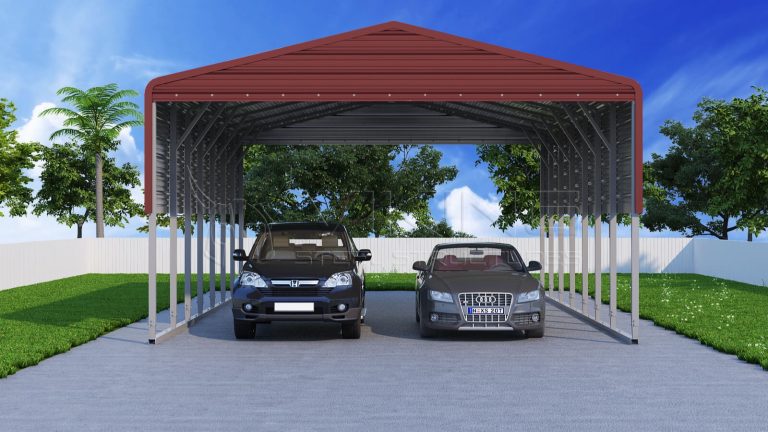The Hidden Economics of Metal Buildings: Saving More Than Just Money

“Metal buildings are cost-effective”, you have heard it thousands of times. But do you know, these buildings have much more to offer? We have revealed the hidden economics of steel structures that benefit their buyers in thousands of ways. While exploring our blog, you will notice the true value of metal buildings goes beyond saving money upfront.
They also save time, energy, and resources, while adding long-term benefits that are often overlooked. So, are you ready to save more than money?
The Real Value of Metal Buildings
Prefabricated structures offer many benefits, but you often give priority to price. However, when you buy a building, consider other factors as well. Let’s check out how production, manufacturing, installation, and utilization of steel buildings offer the benefits you have always wanted in a building.
Lower Construction Costs Without Cutting Quality
Lower costs don’t mean compromising on quality. Steel structures are economical due to lower construction costs, not because they use inexpensive materials. Here is how pre-engineered structure construction helps.
- Prefabrication saves money – Metal building components are manufactured in factories and shipped to the site. This reduces labor costs and shortens building time.
- Fewer mistakes – Since pieces are cut and designed in advance, errors on-site are minimal. This avoids any expensive rework, saving time and money.
- Flexible designs – Metal buildings can be tailored to fit different budgets without compromising strength.
Example:
A small business owner wants to build a new workshop. If they choose traditional brick-and-mortar construction, the project may take 6-8 months and require a large labor team. With a prefabricated metal building, the workshop could be ready in just 2–3 months with lower labor costs.
Hidden economic impact: Faster construction allows the business to start operating sooner and generating income earlier.
Faster Project Completion
Imagine you have bought a building at the lowest upfront price, but you spend most of your time repairing and replacing the structure. You can’t save enough time to work on your project. Even the final cost of the structure turns out to be more expensive.
In business, every day lost in construction means lost opportunities. Steel garages and other steel structures, like carports, sheds, and barns, are installed impeccably in less time than traditional structures.
And they save time in several ways:
- Quick assembly – Prefabricated steel parts fit together like puzzle pieces. But large buildings like clear span garages and commercial structures take slightly more time.
- Less dependency on weather – Metal building is less affected by rain or cold compared to wood or concrete.
- Streamlined process – Since much of the work is done off-site, there’s less disruption during the build.
Example:
A farmer building a new barn before harvest season can’t afford delays. Choosing metal ensures the barn is ready on time. Timely installation protects crops and animals right from the day of installation.
Hidden economic impact: Reduced downtime helps in higher productivity.
3. Durability Reduces Maintenance Costs
Metal buildings are durable, so they can serve the owner for at least 50 years. If you have to pay a high upfront price for such a structure, it will be a win-win situation. Traditional materials like wood can’t last long because they have some drawbacks, like termites and pests. They deteriorate the structural integrity quickly.
On the other hand, metal buildings are much more durable. Here is why:
- Pest-resistant – Termites, rodents, and other pests can’t damage steel.
- Thick Steel Gauges – They stand firm against heavy winds, rain, snow, and even earthquakes because of a strong frame made of thick steel.
- Fire-resistant – This feature also ensures durability, as your structure can remain largely unharmed by fire blazes. Unlike wood, metal does not burn, lowering insurance risks.
Example:
When you have a wooden poultry storage, it’s essential to regularly focus on pest control and roof repairs. A poultry metal barn facility may need only occasional inspections.
Hidden economic impact: Fewer repairs and lower insurance costs add up over decades.
4. Energy Efficiency That Cuts Bills
Many people assume that metal buildings get too hot in the summer or too cold in the winter. But with modern insulation, they can actually be more energy-efficient than brick or wood structures. You can choose from single bubble, double bubble, and woven R-17 insulations and go with other options as per your needs. It will also safeguard a metal building from rusting and offer several other benefits.
- Cool roofs – Metal reflects sunlight, which helps reduce cooling costs over time.
- Better insulation options – Spray foam and insulated panels will keep your steel structure’s indoor temperatures stable.
- Natural light – Metal buildings often use skylights and large windows, reducing the need for artificial lighting.
Example:
A warehouse with insulated metal roofing and walls might save 20-30% on electricity bills. When you compare it to a poorly insulated concrete building, you can notice this difference.
Hidden economic impact: Energy savings pile up year after year. It makes the building more cost-effective in the long run.
5. The Green Advantage that Helps the Environment
Often, money is not the concern when it comes to saving the Earth. Your small steps towards sustainability can help the environment. Steel structures also play a significant role in this process because they do not lead to deforestation, unlike wooden structures.
So, prefab buildings are not only economical but also environmentally friendly because they are:
- 100% Recyclable – Steel buildings of any size and design can be reused without losing strength.
- Less Construction Waste – Prefabrication means fewer leftover materials. It controls landfills to some extent.
- Longer Lifespan – Metal buildings last for many decades. It means no need for rebuilding and using more resources.
Example:
If an office building made from steel is ever demolished, most of its material can be recycled and used again.
Hidden economic impact: Businesses benefit from eco-friendly branding and may qualify for green building incentives.
6. Flexible Design Saves Expansion Costs
You know steel is flexible; it can be shaped into any design need for a building. Whether it is the simplest design, “Carport,” or a customized one, such as “Vertical roof garage with lean-to,” flexible steel effectively meets all design needs. Moreover, businesses often grow and need more space. In this case, expanding a traditional building can be expensive and complicated. Metal buildings, however, are easier to expand.
- Add-on sections – Extra bays or rooms can be added to a steel building with minimal disruption.
- Clear-span design – Metal buildings often have large open interiors without load-bearing walls. With such a large space, you can do whatever you want to.
Example:
A gym owner who starts with a 5,000 sq. ft. building can easily expand to 10,000 sq. ft. without tearing down walls.
Hidden economic impact: Growth becomes easier and cheaper, supporting long-term business success.
7. Lower Insurance Premiums
Metal structures have several features that not only meet the needs for a durable space but also help in lowering insurance premiums. It is because these structures are resistant to fire, pests, and severe weather. And many insurance companies offer lower premiums on these steel structures and commercial metal buildings.
Example:
A farmer insuring a wooden barn may pay much more than one insuring a steel barn of the same size.
Hidden economic impact: Savings on insurance continue year after year.
8. Strong Resale and Long-Term Value
A prefabricated building not only helps you when it’s part of your property, but also when it is not. Yes, a well-designed steel garage or carport improves the curb appeal and resale value of your home. They have a higher resale value due to their durability and lower maintenance requirements.
- Stays in good condition longer – Buyers see less risk when they know the structure will serve them for at least 40 years.
- Attractive to investors – Businesses prefer strong, low-maintenance properties.
Example:
Two warehouses, one built of concrete and one of steel, are sold after 20 years. The steel warehouse requires fewer repairs and has lower operating costs, so buyers find it the best deal even after 20 years.
Hidden economic impact: A higher resale value increases the return on investment.
The Smart Investment Beyond Just Saving Money
Metal buildings are the first choice for many businesses and individuals due to their unique features. These features are worth investing in because of their long-term benefits, not just because of their low prices. The hidden economics of metal buildings reveal that the real value lies in long-term benefits that protect both financial resources and the environment.
Whether you are a small business owner, a farmer, or a large corporation, metal buildings can provide an edge that goes beyond dollars. It’s about sustainability, efficiency, and future-readiness.

Looking for a metal building that fits your needs?

